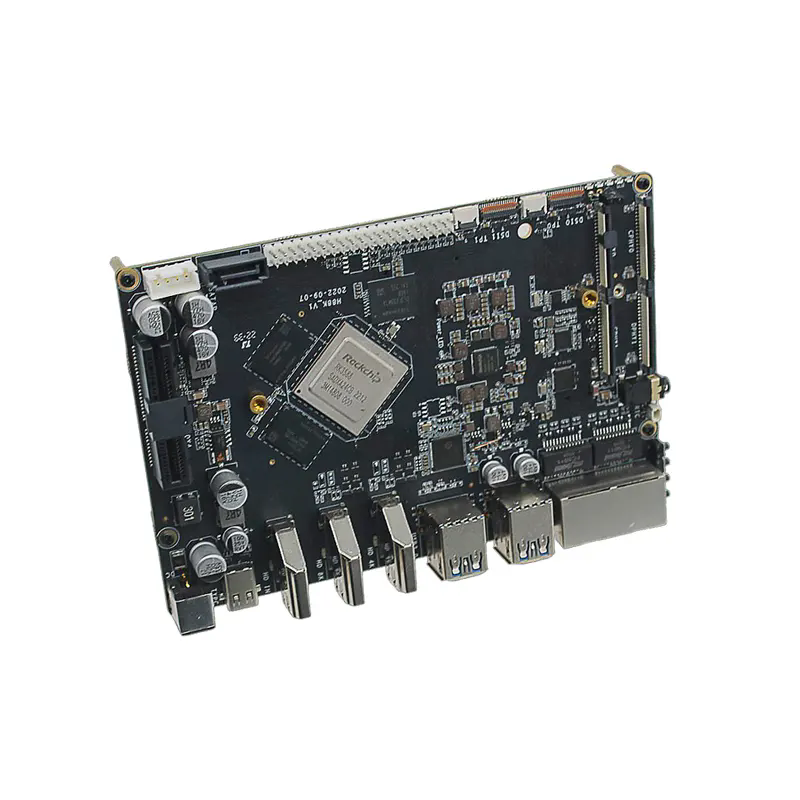Introduction to Dev Kit Carrier Boards: A Key Component in Embedded System Development
2024-10-09
In the world of embedded systems, Dev Kit Carrier Boards play a vital role by providing a platform to interface with system-on-modules (SoMs) or development kits for various microprocessors, microcontrollers, or FPGAs. These boards are crucial for prototyping, testing, and even deploying embedded solutions across industries. Whether you're developing an IoT device, a robotics application, or a custom hardware solution, understanding and leveraging carrier boards can significantly accelerate your development process.
What is a Dev Kit Carrier Board?
A Dev Kit Carrier Board is essentially a printed circuit board (PCB) designed to extend the functionality of a system-on-module (SoM). While SoMs typically contain a microprocessor, memory, and other core components, carrier boards offer additional peripherals like USB ports, Ethernet, HDMI, GPIO pins, and more, making it easier to connect the module to other devices or systems. The board acts as a bridge between the SoM and the external hardware components, enabling developers to easily interface with sensors, displays, motors, and storage devices.
Why are Dev Kit Carrier Boards Important?
1. Prototyping and Development
Carrier boards are often used for rapid prototyping. With a Dev Kit Carrier Board, developers can quickly test their ideas by connecting and configuring various components. Instead of designing a custom PCB from scratch, the carrier board provides a ready-made platform, saving both time and resources during the early stages of development.
2. Enhanced Connectivity
Many SoMs come with basic functionalities, and a carrier board expands these capabilities by adding essential I/O (input/output) options. For example, a carrier board might provide extra USB ports, SD card slots, or support for displays, sensors, and cameras. This allows developers to test their applications in a real-world environment with all necessary components connected.
3. Flexibility and Customization
The modular nature of Dev Kit Carrier Boards allows developers to swap out components or experiment with different configurations without committing to a final hardware design. This flexibility is crucial when working on projects where requirements may change, or where different versions of a product need to be tested.
4. Cost-Effective Solution
Developing a custom hardware solution from scratch can be costly. Carrier boards allow developers to use off-the-shelf SoMs and expand their functionality as needed, reducing the overall cost of development. Once the prototype is finalized, the custom board can be designed, but only after most of the design challenges have been ironed out using the carrier board.
Popular Dev Kit Carrier Boards
There are many popular carrier boards in the market, each designed to work with specific SoMs or processors. Some common examples include:
- NVIDIA Jetson Carrier Boards: These boards support NVIDIA's powerful Jetson SoMs, which are widely used for AI and computer vision applications.
- Raspberry Pi Compute Module Carrier Boards: Designed for Raspberry Pi Compute Modules, these boards offer expanded connectivity and customization options for Raspberry Pi projects.
- Xilinx Zynq UltraScale+ MPSoC Carrier Boards: These boards are tailored for Xilinx's MPSoC (multi-processor system-on-chip) modules, ideal for applications requiring high-performance processing and reconfigurable logic.
- NXP i.MX Carrier Boards: Supporting NXP's i.MX series of processors, these boards are commonly used in industrial and automotive applications.
Considerations When Choosing a Dev Kit Carrier Board
When selecting a carrier board for your project, there are several factors to consider:
1. Compatibility: Ensure that the carrier board is compatible with your SoM or development kit. Each board is usually designed for specific hardware modules, so checking compatibility is critical.
2. Connectivity Options: Evaluate the types of I/O interfaces and peripherals you need. Whether it's USB, HDMI, Ethernet, or GPIO pins, the right carrier board should offer the connectivity options required for your project.
3. Form Factor: Consider the size and layout of the carrier board. For some applications, a smaller, more compact carrier board might be necessary, while others may require larger boards with more connectivity options.
4. Customization: Some carrier boards offer the ability to customize certain components or features. This can be useful if your project requires specific hardware features that aren't available on standard carrier boards.
5. Price and Availability: Finally, consider the cost of the carrier board and whether it's readily available. Some high-end boards can be expensive, so balancing features with cost is important for most development projects.
Conclusion
Dev Kit Carrier Boards are an essential part of embedded system development, providing developers with a flexible, customizable platform for prototyping and deploying applications. Whether you're working with AI, IoT, or custom hardware designs, choosing the right carrier board can make a significant difference in the speed and success of your project. By extending the capabilities of system-on-modules and offering enhanced connectivity, carrier boards simplify the development process, reduce costs, and provide the flexibility needed to innovate in today’s fast-paced technological landscape.
As the demand for smart, connected devices continues to grow, Dev Kit Carrier Boards will remain a key tool in the embedded developer’s toolkit.



